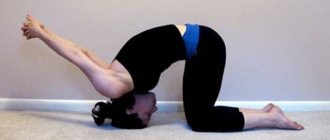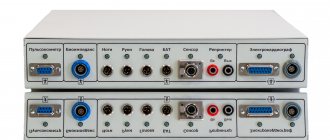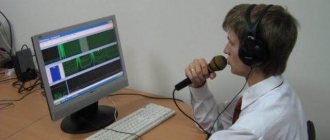How breathing exercises help
Breathing exercises for stuttering in children relax and tone the muscles involved in articulation. As a result:
- the child begins to breathe correctly, observing the pace of inhalation and exhalation;
- fear of articulation disappears;
- muscle spasm, which makes it difficult to keep up the pace of speech, goes away;
- the brain receives more oxygen, which improves its functioning;
- the muscles of the diaphragm, abdominal cavity, and nasopharynx are strengthened.
The following techniques are used in speech therapy:
- Traditional - aimed at training the abs, diaphragm, breathing control when talking, general strengthening of the body;
- breathing exercises according to A. N. Strelnikova - aimed at restoring breathing during stuttering, and also helps eliminate other speech disorders (dyslalia, alalia, general speech underdevelopment).
To develop a sense of rhythm
Speech therapy rhythms involve motor exercises that pursue different goals.
Warm-up
Includes various marching to music with changing directions. Helps you get ready for future work.
Normalization of muscle tone
Suitable exercises: freely swing your arms back and forth, to the sides, alternating between tensing and relaxing your arms.
Rhythmization of movements
Walking, clapping and tapping to different musical tempos and rhythms, singing words and syllables are used. Example: clap the song “Cockerel, cockerel, golden comb.”
Effectively use active exercises accompanied by music and speaking of speech tasks. For example, students pronounce the text and accompany it with movements: “Above us is a tall oak tree (arms to the sides), above us are pine trees, spruce trees (tilts left and right), their heads rustled (clap).”
Execution Rules
Gymnastics for stuttering in children must be performed according to certain rules in order to prevent the young patient’s condition from worsening.
Below is a list of requirements:
- A preliminary consultation with a doctor is necessary, this is especially important for children who have concomitant pathologies. Before starting classes, you need to regulate the load, or identify contraindications, if any;
- The child should study with pleasure, which is possible when he is in a good mood, he is well-fed and has strength. A tired, hungry child will be capricious, and such gymnastics will do nothing but harm;
- Start with short sessions, no more than 10 minutes. Monitor your child’s reaction: if he becomes uncomfortable, it is better to postpone the lesson;
- Gradually increase the duration, but classes should last no more than 30 minutes;
- If it becomes difficult for your baby to breathe, his breathing rhythm has become disrupted, or he begins to panic, interrupt the activity;
- If desired, use music - this will help maintain the rhythm of movements;
- The inhalation is always sharp, noisy, through the nose, the exhalation is calm, effortless, through the mouth.
Who should not do breathing exercises?
Breathing exercises for stuttering in children require concentration and strict adherence to technique, so it cannot be performed until 3–4 years of age.
There are other contraindications:
- discomfort or pain in any localization when performing - headaches, chest pain, joint pain. It is better to consult a doctor to find out the cause of such symptoms;
- neurological diseases - hydrocephalus, increased intracranial pressure, brain space-occupying lesions, epilepsy;
- diseases of the cardiovascular system - congenital defects, mitral valve prolapse;
- previous injuries to the spine, head, chest, arms, legs;
- urolithiasis, hydronephrosis;
- any severe chronic disease with impairment of general condition.
This is not the entire list of contraindications. You should consult with your child's healthcare provider to determine the feasibility of completing the activities.
Acute diseases - colds, inflammatory, infectious - are a temporary contraindication to sessions. After normalization of the condition and good test results, performing gymnastics is possible. The period of abstinence is determined by a specialist.
Breathing exercises by Strelnikova A.N.
Gymnastics according to Strelnikova has been successfully used since the end of the 20th century. The author developed a technique and used it to restore the voice of singers and speakers. Over time, a positive effect was discovered in the treatment of stuttering and other speech disorders.
The technique is based on dynamic breathing movements through the resistance of the diaphragm muscles. During inhalation, the chest contracts (through grasping with the arms or due to bending and turning of the torso), exhalation occurs calmly, without effort.
On the first day, complete the first 3 exercises, repeating them 8 times. Each subsequent day, add one more exercise to the main complex.
Exercise "Palms"
The task serves as a warm-up. The patient must take a sharp breath through his nose 4 times, then pause for 4 seconds and again a series of breaths. Hands in front of you, on the sides of the body, clench your palms into a fist for each breath. Shoulders relaxed. It is performed while standing, but if you feel dizzy or find it difficult to stand for other reasons, you can sit down or even lie down.
After inhaling, you need to exhale. Repeat 32 times.
Exercise "Hug your shoulders"
The back is straight, sitting or standing position. Hands need to be raised to shoulder level, bent at the elbow joints, palms down, one forearm on the other (as if the baby was sitting at a desk). Take a short and noisy breath and hug your shoulders with force, squeezing your chest. There should be a triangle in front of your face. As you exhale, loosen your grip and spread your arms.
Do 8 times. Then pause, and repeat. There should be 12 such repetitions.
Exercise "Epaulettes"
The child stands, arms extended in front of him, elbows bent, pressed to the stomach, palms clenched. Takes a sharp breath, at this time sharply pushes his fists and pulls his shoulders down, straightens his palms, which allows the air to pass deeper and in greater quantities than usual. Then you need to exhale.
Inhalation and exhalation alternate, thus performing 8 series. After this, a few seconds of respite and a new approach. In total you need to complete 4 approaches.
Exercise "Pump"
It is also performed standing, legs apart, arms along the body. As you inhale, the child should bend forward, rounding his back and imagining a pump. Hands reach knees, head is bowed forward. The entrance is over - you need to exhale and return to the starting position. A total of 8 approaches are required.
There are other exercises for stuttering: “Large Pendulum”, “Head Turns”, “Ears”, “Small Pendulum”, “Rolls”, “Steps”, “Cat”. You will master them later, when you have developed the correct algorithm for performing the previous exercises.
Why are breathing movements necessary?
As a result of performing the exercises, breathing during stuttering becomes abdominal or diaphragmatic. Before this, it is thoracic superficial and has a convulsive nature due to insufficient development of the abdominal muscles. This is especially pronounced in those patients who do not accept sports in any form and whose disease was diagnosed a long time ago.
With this type of breathing, the excitability of the respiratory and speech centers of the brain increases, which negatively affects the rate of speech: the child speaks quickly and begins to stammer.
Training the abdominal muscles, the muscles of the diaphragm and the formation of a stereotype of deep abdominal breathing can eliminate these disorders. The vital capacity of the lungs also increases, which is why the baby begins to use breathing more effectively when speaking: the voice does not interrupt, it becomes even and expressive.
In addition, gymnastics is movement. And with movements, brain activity increases, interneuron connections between the left and right hemispheres are restored. The child’s cognitive processes improve and he begins to assimilate new information more easily. This is especially noticeable if you supplement the tasks with regular physical exercises.
Logorhythmics
Treatment of stuttering in adolescents using logorhythmics is aimed at improving speech rhythms and creating smooth, expressive speech. Exercises affect breathing, movement, sensory and speech motor areas. Also, such activities have a positive effect on the emotional and volitional qualities of the patient, making him more active.
During classes, the child makes movements, while rhythmically pronouncing some sounds.
For classes you need music - at different tempos (fast, moderate, accelerated, slow, rapid), which helps the child quickly switch from one type of movement to another. You also need speech material - tongue twisters, rhythmic sentences.
An example program could be like this:
- introductory exercises - walking for the ability to control movements, the ability to walk at different paces;
- chanting to develop speech breathing, coordinating singing with hand movements;
- singing and its coordination with walking - aimed at developing rhythmic hearing, attention, understanding of the character and tempo of music;
- exercises for coordinating melodic speech with movements - the child learns to control his muscles;
- listening to music, exercises to stimulate musical memory;
- game exercises to develop emotionality and stimulate imaginative thinking;
- final exercise of a calm nature.
Or you can pronounce tongue twisters: first short ones (within 2 weeks), gradually choosing more complex and longer ones, with sounds and words that are difficult to pronounce.
How to increase the effectiveness of gymnastics
The results of breathing exercises for stuttering will be better if you follow the following rules:
- Comfortable conditions for classes are required. To do this, you need to first ventilate the room, avoiding cold or, conversely, too warm temperature in the room;
- If a child is studying with a specialist, an emotional contact must be established between them, otherwise it will be stressful for the patient and he will refuse to study;
- It is advisable that the first few lessons be conducted by a speech therapist and show how to perform the movements correctly. Improper technique can make stuttering worse;
- Gymnastics does not cancel other types of correction - classes with a speech therapist, psychologist, drug treatment, physiotherapeutic procedures, massage, physical therapy, but only complements them. Follow your doctor's recommendations and do not skip medications or other treatments;
- Classes should be held regularly, at least 2 times a day.
- For lessons, choose morning or afternoon hours - at this time children are cheerful, full of strength and energy;
- During a course of gymnastics for stuttering in children, you need to provide the child with adequate sleep and rest, and avoid physical and emotional stress;
- Combine speech therapy with regular sports activities. Any form of activity at home is suitable: jumping, push-ups, squats, training on exercise machines (if you have them);
- Get outdoors more often. Regular walks, outdoor games, running, cycling not only train the respiratory muscles, but also create a good mood, saturate the body with oxygen, and strengthen the body;
- Develop correct eating behavior: the diet should contain a lot of fresh vegetables and fruits, food should be in moderation;
Remember that one of the important factors that influences the outcome of stuttering treatment is the kindness and acceptance of parents. Children subtly sense the atmosphere in the house and the attitude towards themselves. Do not scold or shame your child under any circumstances, especially in front of strangers.
Rejoice at his successes, praise him, show in any way that you are there for him and love him, regardless of whether he has a stutter or not. This is an additional incentive for him: he will try harder, make an effort, and the result will not keep you waiting.
Causes of stuttering in teenagers
Mostly, the pathology appears in childhood: at 3–4 years. If stuttering is diagnosed in adolescents or an adult, this means that correction was not carried out at the right time or it was inadequate. But there are also cases when pathology appears for the first time in adolescence, and before that speech is normal.
In cases where pathology first appears in adolescents, this happens for several reasons:
- genetic predisposition, when there are disturbances in the functioning of the nervous system, when exposed to provoking factors they lead to stuttering or other speech disorders;
- neurological pathology;
- the presence of other speech defects, while the violation may be minor and not interfere with the teenager, but causes fear and spasms;
- difficult relationships in family, school, company;
- conflicts, stress;
- excessive stress on a teenager - both physical and psychological: a complex curriculum, tests, tests, exams;
- unfavorable environment - dysfunctional family, lack of attention on the part of parents, their indifference to the child;
- the opposite situation is too high demands made by parents, pressure and expectation from him of excellent studies, good results in all areas. At the same time, parents do not take into account the developmental characteristics of their child, his character and abilities;
- injuries of the central nervous system - at birth or after;
- infectious diseases, intoxications, endocrine disorders that affect the brain, especially if they are severe;
- convulsive reactions.
Whatever the cause, stuttering is not just a speech impediment. In most cases, this is a dysfunction of the nervous system with many consequences. Therefore, eliminating stuttering in adolescents is a complex task, in the solution of which several specialists take part: speech therapist-defectologist, neurologist, psychologist or psychiatrist.










